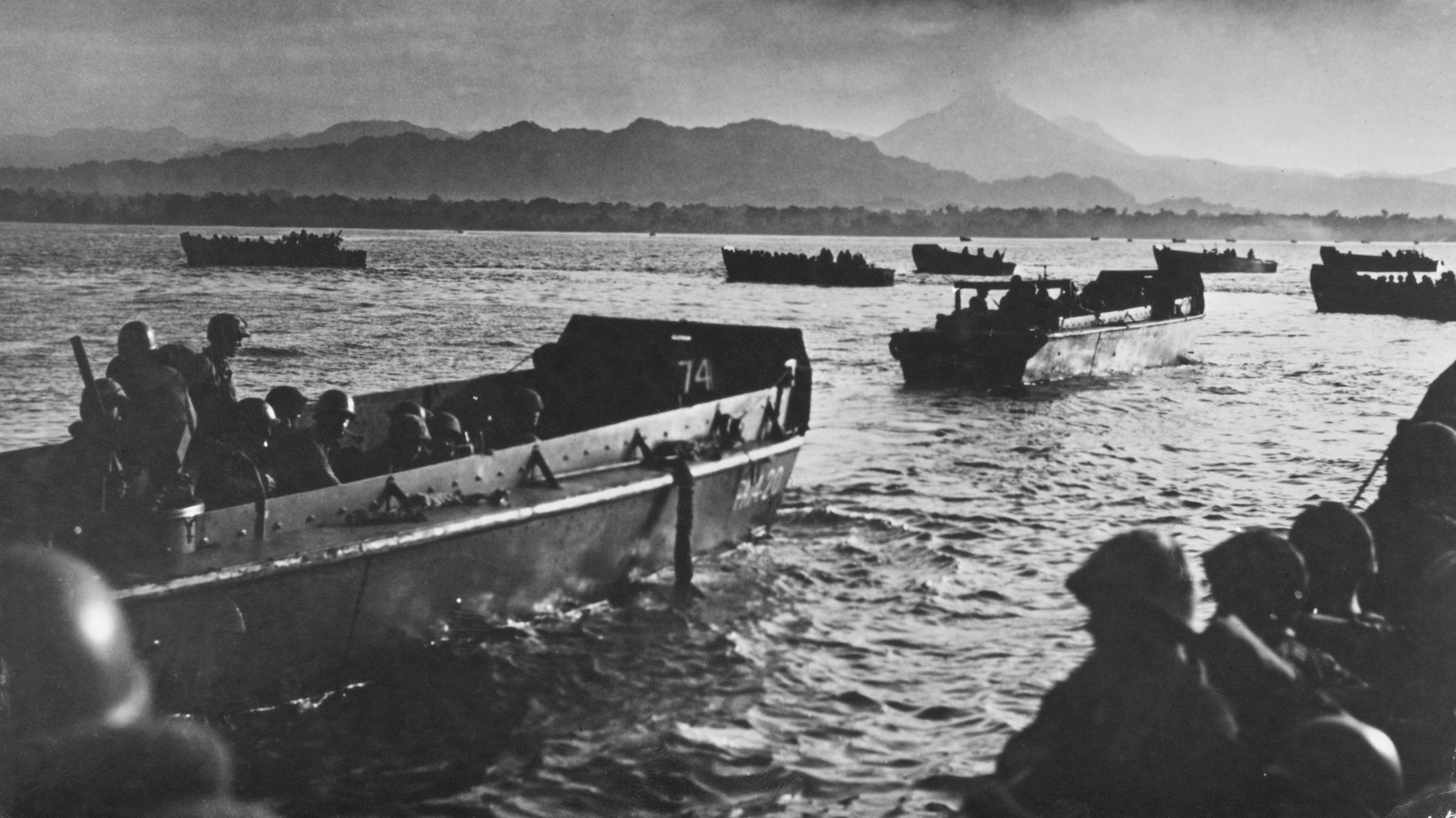Andrew Higgins designed the LCVP with several factors in mind: It had to be cheap, sturdy, capable of operating in all kinds of conditions, and capable of expeditiously unloading troops. Regarding its build, Higgins boats were constructed primarily of plywood, saving steel for the ramp. This offered almost no protection on the craft’s sides, exposing troops to enemy fire. “Saving Private Ryan” captured this aspect of the Higgins boats perfectly, as well as another concern.
Higgins boats swayed in choppy water, so many onboard quickly became nauseated. In “Saving Private Ryan,” several troops vomit aboard the craft. While viewers might assume they did so out of fear, many soldiers likely did this as a result of the craft swaying in rocky seas, resulting in seasickness. Ultimately, the primary purpose of the Higgins boat was to get troops out of the vehicle quickly so it could back up and return to sea to pick up more personnel.
Depending on the need, a Higgins craft carried a 36-man platoon, up to 8,000 lbs. of cargo, or a 12-man squad and a military Jeep. Each could unload swiftly and send the boat back for more. They came equipped with a pair of .30 caliber machine guns, so they had limited offensive capabilities. The Higgins boat satisfied the Marine Corps and Army’s need to attack beachhead defenses swiftly, and by the end of the conflict, 23,358 Higgins boats were built for that purpose.






/cdn.vox-cdn.com/uploads/chorus_asset/file/25431555/Instagram_Stickers_ALL.png)
